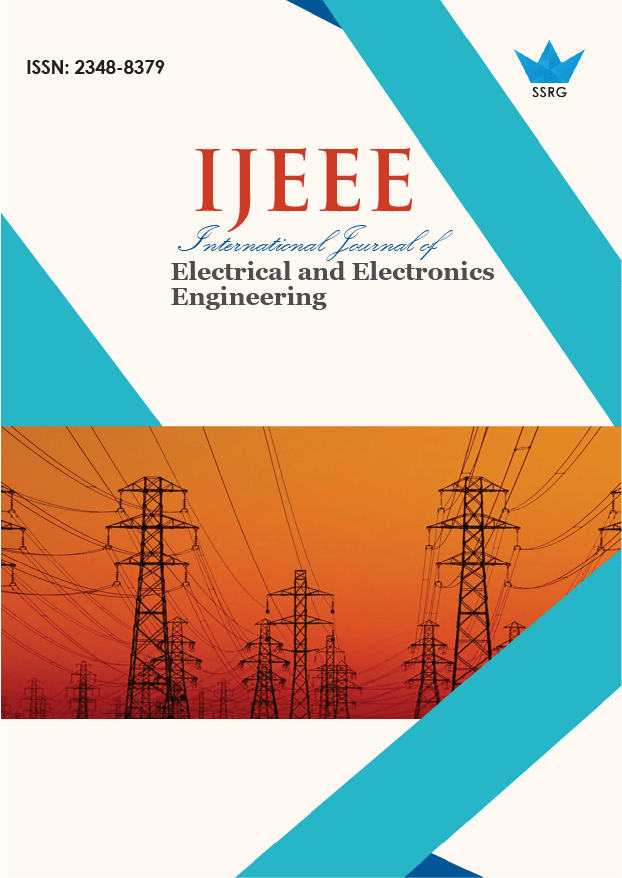Line-of-Sight and Fresnel Zone Clearance Link Budget Analysis for Planning Outdoor TV White Space Wireless LAN

| International Journal of Electrical and Electronics Engineering |
| © 2025 by SSRG - IJEEE Journal |
| Volume 12 Issue 4 |
| Year of Publication : 2025 |
| Authors : Alberto S. Bañacia, Rosana J. Ferolin |
How to Cite?
Alberto S. Bañacia, Rosana J. Ferolin, "Line-of-Sight and Fresnel Zone Clearance Link Budget Analysis for Planning Outdoor TV White Space Wireless LAN," SSRG International Journal of Electrical and Electronics Engineering, vol. 12, no. 4, pp. 63-71, 2025. Crossref, https://doi.org/10.14445/23488379/IJEEE-V12I4P104
Abstract:
A comprehensive link budget analysis for outdoor IEEE 802.11af-based networks has not been available to date. This analysis is essential for planning and developing highly reliable wireless links. This paper determines path loss measurements - based on the link budget for the IEEE 802.11af - compliant devices at 593 MHz for three different sites in a suburban environment. Google Earth Pro visualizes an unobstructed line-of-sight between the AP - STA pair. Additionally, the 1st Fresnel zone and its 60% clearance around the line-of-sight are carefully considered and analyzed to ensure effective transmission in uneven terrain. According to the study’s findings, the calculated link budget aligns reasonably well with the actual measurements taken when the Log-regression path loss model is used. The calculated fade margin differences between the measured and computed values in dB are 2 for Site 1, 2 for Site 2, and 7 for Site 3, resulting in an average difference of 4 dB. However, based on a 20 - dB minimum fade margin, none of the computed values for the three sites can provide a reliable RF propagation link, while only the measured value of 23 dB at Site 3 can provide a reliable link. Nevertheless, a link budget improvement can be achieved if the radiated power is increased to an FCC-permitted 30 dBm. Applying the Log-regression path loss model increases the margin to 29 dB for Site 1, 24 dB for Site 2, and 26 dB for Site 3.
Keywords:
Fade margin, 1st Fresnel zone, Link budget, TV white space, Path loss model.
References:
[1] Office for Digital and Emerging Technologies, Achieving Universal Connectivity by 2030, Global Connectivity, 2025. [Online]. Avaliable: https://www.un.org/digital-emerging-technologies/content/global-connectivity
[2] P802.11-REVmd/D2.0, Dec 2018 - IEEE Draft Standard for Information Technology--Telecommunications and Information Exchange Between Systems Local and Metropolitan Area Networks--Specific Requirements-Part 11: Wireless LAN Medium Access Control (MAC) and Physical Layer (PHY) Specifications, IEEE Access, pp. 1-4601, 2018.
[Google Scholar] [Publisher Link]
[3] Kentaro Ishizu et al., “Field Experiment of Long-Distance Broadband Communications in TV White Space Using IEEE 802.22 and IEEE 802.11af,” International Symposium on Wireless Personal Multimedia Communications, Sydney, NSW, Australia, pp. 468-473, 2014.
[CrossRef] [Google Scholar] [Publisher Link]
[4] Antonio Montejo et al., “Implementation of a Multi-Hop Network at the University Campus Using an IEEE 802.11af-Compliant Network,” 20th International Symposium on Wireless Personal Multimedia Communications, Bali, Indonesia, pp. 173-180, 2017.
[CrossRef] [Google Scholar] [Publisher Link]
[5] Yousif Mohsin Hasan, and Nor Hisham bin Haji Khamis, “Link Budget Analysis for Underwater Communication System,” International Journal of Electrical and Electronics Research, vol. 2, no. 4, pp. 195-200, 2014.
[Google Scholar] [Publisher Link]
[6] Selewondim Eshetu Ayana et al., “A Development of Satellite Communication Link Analysis Tool,” Journal of Astronomy and Space Sciences, vol. 37, no. 2, pp. 117-129, 2020.
[CrossRef] [Google Scholar] [Publisher Link]
[7] Jeffrey De Bruyne et al., “Comparison of the Link Budget with Experimental Performance of a WiMAX System,” EURASIP Journal on Wireless Communications and Networking, vol. 2009, no. 1, pp. 1-8, 2009.
[CrossRef] [Google Scholar] [Publisher Link]
[8] Trilochan Patra, and Swarup Kumar Mitra, “Link Budget Analysis for 5G Communication in the Tropical Regions,” Wireless Communications and Mobile Computing, vol. 2020, pp. 1-9, 2020.
[CrossRef] [Google Scholar] [Publisher Link]
[9] Hadeel Elayan et al., “Terahertz Channel Model and Link Budget Analysis for Intrabody Nanoscale Communication,” IEEE Transactions on NanoBioscience, vol. 16, no. 6, pp. 491-503, 2017.
[CrossRef] [Google Scholar] [Publisher Link]
[10] Zu-Kai Weng et al., “Millimeter-Wave and Terahertz Fixed Wireless Link Budget Evaluation for Extreme Weather Conditions,” IEEE Access, vol. 9, pp. 163476-163491, 2021.
[CrossRef] [Google Scholar] [Publisher Link]
[11] Nathaniel Chimaobi Nnadi, Henry Akpan Jacob, and Gloria Ngozi Ezeh, “Link Budget Analysis for Line of Sight Wireless Communication Link with Knife Edge Diffraction Obstruction,” Science and Technology Publishing, vol. 4, no. 6, 2020.
[Google Scholar] [Publisher Link]
[12] IEEE Standard for Information Technology-Telecommunications and Information Exchange between Systems--Local and Metropolitan Area Networks--Specific Requirements-Part 11: Wireless LAN Medium Access Control (MAC) and Physical Layer (PHY) Specifications,” IEEE Access, pp.1-4379, 2014.
[CrossRef] [Google Scholar] [Publisher Link]
[13] Keiichi Mizutani et al., “IEEE 802.11af Indoor Experiment in UK Ofcom TVWS Trial Pilot Program,” IEEE Vehicular Technology Conference, Glasgow, UK, pp. 1-5, 2015.
[CrossRef] [Google Scholar] [Publisher Link]
[14] Theodore S. Rappaport, Wireless Communications: Principles and Practice, 2nd ed., Prentice Hall, pp. 107- 109, 2002.
[CrossRef] [Google Scholar] [Publisher Link]
[15] David A. Freedman, Statistical Models: Theory and Practice, University of California, Berkeley, 2009.
[Google Scholar] [Publisher Link]
[16] The Link Budget and Fade Margin, Campbell Scientific, 2016. [Online]. Avaliable: https://s.campbellsci.com/documents/us/technical papers/link-budget.pdf
[17] Rodney Martinez Alonso et al., “TV White Space and LTE Network Optimization toward Energy Efficiency in Suburban and Rural Scenarios,” IEEE Transactions on Broadcasting, vol. 64, no. 1, pp. 164-171, 2018.
[CrossRef] [Google Scholar] [Publisher Link]

 10.14445/23488379/IJEEE-V12I4P104
10.14445/23488379/IJEEE-V12I4P104